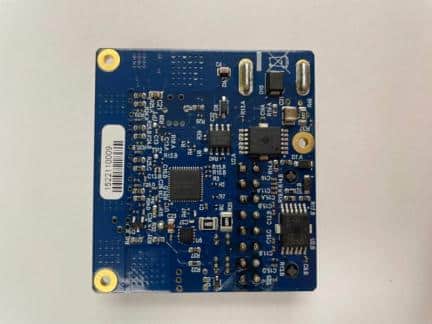In the EV evolution, ensuring vehicle safety and circuit efficiency is paramount, highlighted by introducing a compact e-fuse box board.

In the rapidly evolving landscape of Electric Vehicles (EVs), safeguarding the intricate electronic systems has become paramount. As these vehicles transition from mere modes of transport to sophisticated electronic hubs on wheels, their reliance on complex circuitry, ranging from battery management to onboard communication systems, has skyrocketed. The humble yet indispensable eFuse box board is central to ensuring the safety and efficiency of these circuits. Serving as a bulwark against potential electrical faults, eFuses not only protect the integral components of EVs but also play a pivotal role in ensuring the vehicle’s longevity and the safety of its occupants. Renesas introduces its electronic-fuse (e-fuse) box reference board as a practical solution for power distribution systems.
Despite its compact footprint, just 30cm^2, the board houses ten output channels, all operated by Renesas Intelligent Power Devices (IPD). These IPDs not only ensure smart switching but also safely handle high currents. The e-fuse functionality is achieved by leveraging the current feedback provided by the IPDs. The operation of the e-fuse is governed by software embedded within an RL78 Microcontroller Unit (MCU). The board’s adaptability shines, as its fuse characteristics can be modified to match an array of cables and environments.
The Y-IPD-EFUSE-PDB-01 showcases an array of features packed into a compact design. Boasting ten switched outputs, it offers two channels with a 30A capacity, four channels at 10A, and another four at 3A. Its compact dimensions are 55mm x 55mm x 25mm. Additionally, it features a Renesas ISL78301 LDO dedicated to a 5V power supply. A Negative Temperature Coefficient (NTC) is integrated for accurate board temperature information, and the module operates efficiently in ambient temperatures ranging from -40C to +85C. Communication is facilitated via a Controller Area Network (CAN) interface. The board also boasts robust connectors for both input power and loads. User interaction is streamlined with a Graphical User Interface (GUI) that allows for free selection of active outputs, individual e-fuse parameter settings for each channel, calibration of current measurements, fault diagnosis, and even parking mode emulation.
From a top view, the board is equipped with several soldered components, including two 30A IPDs, four 10A IPDs, a linear regulator, and various connectors, such as the battery, load, and one for the adapter board. Additionally, there are DIP switches present. Flipping to the bottom reveals two 3A IPDs, an RL78/F14 16-bit MCU, a LIN Transceiver, and a CAN Transceiver. Seven LEDs are incorporated to assist users, providing clear indications of the active mode or function.
Renesas has tested this reference design. It comes with a Bill of Material (BOM), schematics, Printed Circuit Board (PCB) layout, Gerber file, etc. You can find additional data about the reference design on the company’s website. To read more about this reference design, click here.






